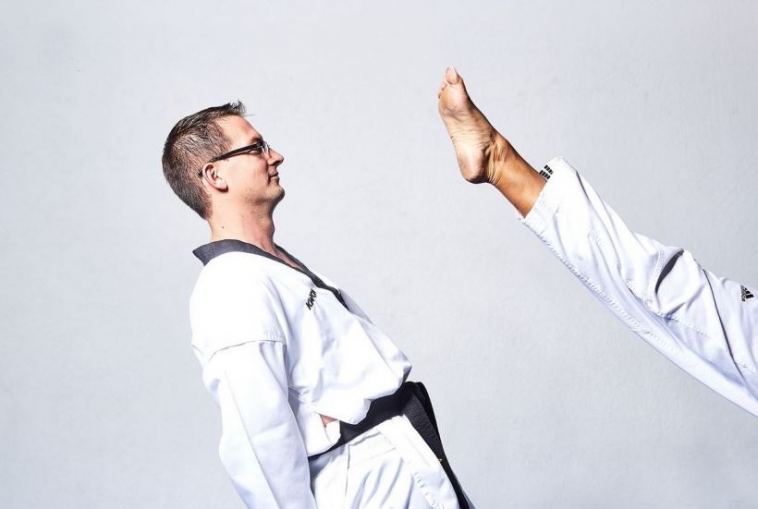- Like
- SHARE
- Digg
- Del
- Tumblr
- VKontakte
- Flattr
- Buffer
- Love This
- Save
- Odnoklassniki
- Meneame
- Blogger
- Amazon
- Yahoo Mail
- Gmail
- AOL
- Newsvine
- HackerNews
- Evernote
- MySpace
- Mail.ru
- Viadeo
- Line
- Comments
- Yummly
- SMS
- Viber
- Telegram
- JOIN
- Skype
- Facebook Messenger
- Kakao
- LiveJournal
- Yammer
- Edgar
- Fintel
- Mix
- Instapaper
- Copy Link
Introduction
Attention-Deficit and Hyperactivity Disorder (ADHD) are developmental disorders that often stem from early childhood. These conditions often need therapy, medications, and community supports for the individual to live a useful life. Although doctor-prescribed medications and therapies are the usual lines of treatments for ADHD, ADD, and other attention-related disorders, there is another type of alternative method that may aid in these conditions: Taekwondo.
Taekwondo World Cup Champion and Master Instructor Jin Suh has internalized the principles of the sport and how it helps reduce the symptoms of ADD and ADHD. After years of teaching, starting his own martial arts company, and representing the United States in international competitions, he learned how Taekwondo has helped his students develop increased focus, attention, and mind-body connections.
In this post, Jin Suh shares his insights on how Taekwondo can help in attention-related disorders.
Stimulating the Brain for Improved Focus
Children and adults with ADHD often have difficulties concentrating on a singular task. This task becomes even more challenging when they are “forced” to sit still or perform the action in a relaxed position.
This is one of the primary reasons why some students with ADHD can fidget, roam around in the classroom, or become distracted with other repetitive behaviors. Through Taekwondo foundations, students have to memorize certain movements which challenge their ability to focus and pay attention to the instructor.
Understanding the foundations is also a merit-based system that allows them to stay motivated to pay attention to the Taekwondo instructor. By keeping this practice in Taekwondo instructions, the student can apply this knowledge and skills in other areas of one’s life.
Remembering Rituals and Rules
Since martial arts involves a specific system, students with ADHD and ADD are also encouraged to follow these rules and rituals to master the sport. Some areas of rituals in Taekwondo include the following:
- Donning the Taekwondo uniform properly: Participants in a session must wear the attire accordingly, from the robe, belt to other protective gear. The systematic and proper adornment of the uniform helps in building a routine.
- Proper form of stances, blocks, kicks, and punches: Instructors will teach students how to exhibit the proper form of the Taekwondo movements. Memorizing the proper form is essential, which trains the student to build this ritual over time.
- Imbibing virtues: Aside from the martial arts system taught in Taekwondo, the underlying principles also involve imbibing values such as courtesy and integrity. By mastering these rules in the sport, one can also translate these values into daily life.
Providing Movement Activities for the Release of Energy
Many students with ADHD and ADD also need movement stimulation to stay calm. They often have pent-up energy that needs to be released through movement, which formal academic education may have difficulties providing.
Thus, extra-curricular activities such as Taekwondo may give this release of energy through movement. Similar to how exercise or other sports provide a sense of calm after the activity, martial arts offer focus training and expenditure of excess energy.
Socialization Purposes
Social difficulties also exist for people with developmental conditions. Some individuals with ADHD and ADD have problems staying on the topic during a conversation because their minds can jump from one idea to another.
Taekwondo also gives a chance for individuals to socialize with others during their free time. They can practice the values of focus, courtesy, and respect when handling conversation through these rules:
- Not interrupting: When someone is explaining or discussing during a conversation, it is respectful not to interrupt in the middle of it, as a sign of courtesy to your social partner.
- Focus in conversation: The same skill of focus taught in Taekwondo can also be applied in conversation, which means paying attention to what the other person is saying rather than adding ideas right away which are not part of the current topic.
- Avoiding unnecessary dominance: According to Jin Suh, there are instances in Taekwondo where opponents must stop the attack. This allows for self-control, which can also help avoid unhelpful dominance in social interactions.
Personalized Instruction for Complete Mastery
Although Taekwondo classes are mostly done in groups, practice and attention can often come in one-on-one interactions. The personalized instruction to correct one’s form, teach the rules and rituals, and learn other valuable lessons during Taekwondo sessions helps students feel that they are seen and heard.
There are instances where individuals with ADD and ADHD can act out in group settings because an authority role fails to give the student appropriate attention. By giving personalized instruction through the Taekwondo classes, students can also feel validated and encouraged to continue their craft.
Taekwondo for Generalized Focus, Discipline and Character
Learning martial arts such as Taekwondo helps improve conditions such as ADHD and ADD because they teach principles that can be translated into daily life. When learning to focus on one area, the mind can be trained to develop focus and attention in other natural situations.
Like a double-edged sword, Jin Suh emphasizes that Taekwondo teaches students a form of self-defense or a sport and the values of integrity and being an ambassador of peace and goodwill in their respective communities.
About Theresa Duncan
Originally from Detroit, MI, Theresa has been offering health and fitness advice for the last 30 years while working as an engineer. She decided to turn her passion into a profession, and finds nothing more satisfying than helping others reach their health and fitness goals.

